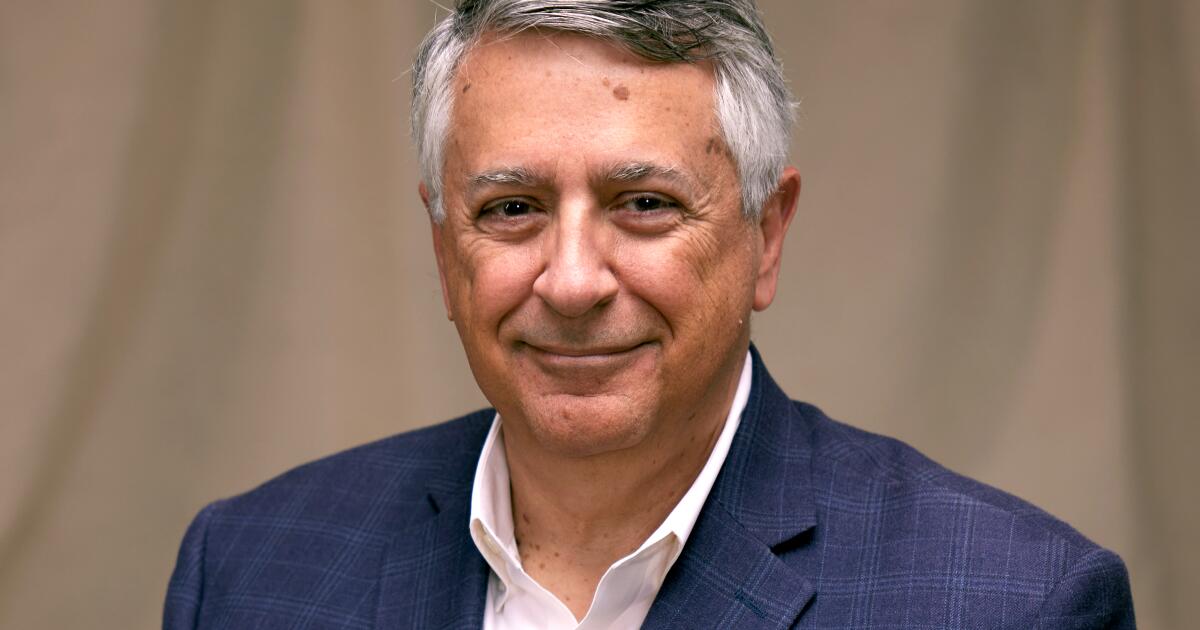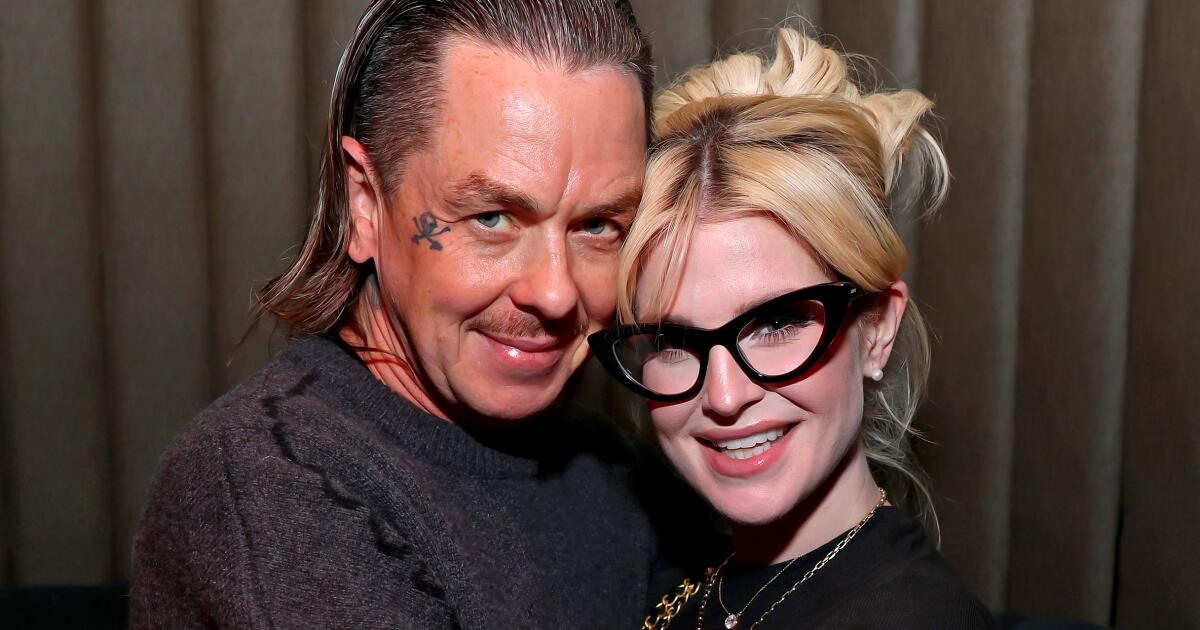Sony Pictures CEO Tony Vinciquerra defends ‘Spider-Man’ spinoffs


When Tony Vinciquerra arrived at Sony Pictures Entertainment in 2017, it was far from business as usual.
The Culver City studio was still reeling from a 2014 cyber attack that exposed employees’ personal information and revealed internal communications, damaging its reputation and leading to major financial losses. Its film studio was in such a slump that Tokyo parent company Sony Corp. took a nearly $1 billion write-down just months before Vinciquerra was announced as the new chief executive and chairman.
At the time, he was working at private equity firm TPG after a long career at Fox Networks.
“When people approached me about this job, I really wasn’t looking to go back to work full-time, be in the office every day,” said Vinciquerra, 70. “But what was really attractive was the potential.”
Under his leadership, Sony Pictures mounted a comeback.
The film studio revitalized several franchises, including “Jumanji” and “Bad Boys,” churned out its all-important “Spider-Man” movies and started to capitalize on its sister PlayStation video game division by making film and TV series based on that intellectual property. The studio continued to nurture its key shows “Jeopardy” and “Wheel of Fortune,” weathering host changes for both. And it branched out, making acquisitions in the anime market and in movie theaters.
But the studio also had its share of struggles. Like every studio, Sony’s business was hurt by the pandemic and last year’s dual strikes. The company mounted a failed bid for Paramount Global earlier this year. The film studio’s efforts to expand the “Spider-Man” universe into movies about characters other than the titular superhero have had middling box office results.
On Jan. 2, Vinciquerra will step down from his role and hand control to current Sony Pictures Chief Operating Officer Ravi Ahuja in a planned succession that was signaled for months.
Vinciquerra spoke with The Times ahead of his last day to reflect on his more than seven-year tenure at Sony Pictures and what’s to come for him. This conversation has been edited for clarity and length.
Describe the state of Sony Pictures when you arrived in 2017.
The environment of the studios and the business was still vibrating from the hack. There was so much damage done by that in terms of invasion of privacy and sharing of emails. It was palpable. You could feel it even in June of ’17 when I joined.
The financials showed a lot of room for improvement. The fact that Sony owned pictures, music, PlayStation and technology … there’s no other company in the business that had that combination of assets. I didn’t understand why the company wasn’t trading IP back and forth among its units, and they weren’t really working together. So I saw that as a great opportunity; it’s really why I decided to come here.
What were your main priorities when you started in the job?
All of our competitor companies either had started, or were about to start, general entertainment streaming services, and we were under some pressure to do that as well. But we realized pretty quickly that if everybody else is doing that — all seven or eight of our competitors were doing that — why should we? Knowing that they would be fighting tooth and nail to get subscribers, why wouldn’t we just be the arms dealer to supply the weapons for those streaming services to fight each other and thereby improve our business?
We also, at the time, had 110 cable networks. And it was pretty clear that that business was on the downslope. So we set a strategy to get out of that business for the most part, except in markets where cable networks are still doing really well, which is Latin America, Spain and India.
Looking back at what’s happened with all the streamers, the arms dealer decision looks pretty prescient now.
It was pretty obvious, and also the cable network decision was pretty obvious. And really, what’s going on in the business today, most of the streaming services will become profitable, but the cable networks are going in the wrong direction, and that’s not going to change. That’s really the issue for our colleague companies.
How do you feel about the future for anime?
We haven’t rolled Crunchyroll out in the entire world yet, so we still have quite a ways to go. The audience for anime is violently passionate — violent in a good way, not violent in a bad way. They are the most passionate audience ever. It’s got a great future. And unfortunately, others have noticed now and are starting to get into the business. Netflix and Hulu are starting to get in the business and raise the cost of product for us. But, you know, that comes with success.
Part of your tenure included the strikes, and you’ve commented before on how you feel the contract terms from the unions are increasing costs and forcing productions out of the U.S. Do you think the new California film tax credit proposal will change things?
I don’t think the California change will really impact [the situation] because it still doesn’t cover above-the-line actors, it doesn’t cover casting, and it’s still a very difficult process to get done in California.
Not only did the union deals raise costs, but California raises costs as well, just the regulations and the hoops that you have to jump through to get production done here. My suggestion would be, as I’m leaving this job, is that they take a real hard look at the program and the restrictions on the business and and try to figure that out.
How do you feel about the performance of the film studio during your tenure?
We’ve had mostly very, very good results. Unfortunately, [“Kraven the Hunter”] that we launched last weekend, and my last film launch, is probably the worst launch we had in the 7 1/2 years so that didn’t work out very well, which I still don’t understand, because the film is not a bad film.
But we’ve been very successful. We’ve beat our budgets every year I’ve been here, even through strikes and COVID, and max bonuses several of the years for all the employees. It was a good run, and the film studio was a big part of it.
Going back to “Kraven the Hunter,” and Sony had “Madame Web” earlier this year, which also underperformed …
Let’s just touch on “Madame Web” for a moment. “Madame Web” underperformed in the theaters because the press just crucified it. It was not a bad film, and it did great on Netflix. For some reason, the press decided that they didn’t want us making these films out of “Kraven” and “Madame Web,” and the critics just destroyed them. They also did it with “Venom,” but the audience loved “Venom” and made “Venom” a massive hit. These are not terrible films. They were just destroyed by the critics in the press, for some reason.
Do you think that the “Spider-Man” universe strategy needs to be rethought?
I do think we need to rethink it, just because it’s snake-bitten. If we put another one out, it’s going to get destroyed, no matter how good or bad it is.
How do you feel about the state of the industry going into 2025?
There’s a period of asset readjustment coming. It’s going to be for the next year and a half to two. I think it’s going to be a little bit chaotic. The one thing we do know for sure is that the demand for entertainment is not going down. It’s becoming slightly different. But once all of these companies get to the point where they’re stable, they’ll have a great run ahead of them.
2026 is going to be a great year in the film business. And the television business is still perking along, and our market share keeps going up, so we’re very content there. And then we’re looking at other businesses. The film and TV business are probably not going to be great growth businesses, but we’re looking at other things. We have Crunchyroll, we have Alamo Drafthouse and we’re looking at location-based entertainment projects. I’m pretty comfortable with where the company is right now. It’s very stable, relative to the rest of the business.
What made Sony interested in the Alamo Drafthouse deal?
It’s a very different, very unique concept for viewing a film. It’s a very small business. So we have to grow into the markets that are important to domestic box office.
Alamo, even though it only has 41 locations, has 4.5 million loyalty program members, so we have a built-in way to talk to their customers. That’s going to be a very, very big advantage of it for us in the future. And secondly, the customer profile of Alamo Drafthouse is not terribly dissimilar to Crunchyroll. So we’ll use it to promote Crunchyroll, and we’ll also use it in a lot of other ways. It was not a big cash outlay, but the results of what we’re going to gain from this by having a view of our customers’ likes and dislikes will benefit us greatly in the long run.
After you step down, you’ll be moving into an advisor role for 2025. What does that role look like?
I’m here to answer questions, and I’ll be doing some work with Sony Tokyo, but I’ll be in a different office, hidden away so nobody can find me. I don’t know. We’ll see how it works out.
What are your plans for the future?
I don’t know yet. I’ve had a lot of outreach from private equity firms and and other investment-oriented companies. I’m not going to think about it until after the holidays. But most likely will involve some return to private equity or investment companies, but not for sure.
How would you describe your legacy at Sony Pictures?
Where I get my psychic reward is helping people to do their jobs better and get better in their careers, and that’s really how I judge how well I do. The second part of that corollary is to leave a place better than I found it. And I think I’ve done that most every place I’ve been at. I like to fix things and that’s really how it all comes together.
I think I’m leaving the place in a better place, but time will tell. It feels like it’s a very stable business, and I think that’s the legacy.





